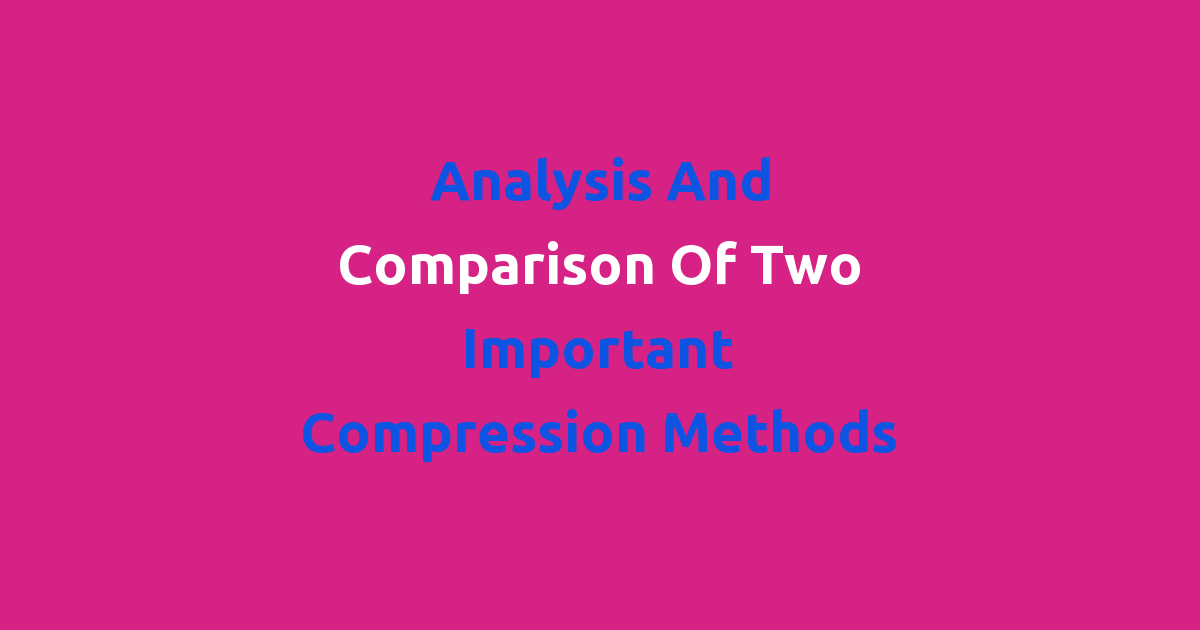This essay will compare and contrast two significant compression methods.
Analysis and Comparison of Two Important Compression Methods
Introduction
In the fast-paced world of technology, data compression methods play a crucial role in storing and transmitting large amounts of data efficiently. Two important compression methods that are widely used are Lossless and Lossy compression. In this project, we will analyze and compare these two compression methods to understand their advantages and disadvantages in different scenarios.
Problem Statement
The main problem that we aim to address in this project is to determine which compression method is more suitable for specific types of data and applications. Understanding the differences between Lossless and Lossy compression will help us make informed decisions while designing systems for data storage and transmission.
Existing System
In the existing system, both Lossless and Lossy compression methods are used in various applications depending on the requirements. Lossless compression is preferred in scenarios where data integrity is crucial, such as medical imaging and text files. On the other hand, Lossy compression is used in scenarios where some loss of data is acceptable, such as image and video compression.
Disadvantages
One of the main disadvantages of Lossless compression is that it may not achieve as high compression ratios as Lossy compression. This can lead to larger file sizes and longer transmission times in certain applications. On the other hand, Lossy compression may result in a loss of quality in the compressed data, which may not be acceptable in certain scenarios.
Proposed System
In our proposed system, we aim to combine the advantages of both Lossless and Lossy compression methods to achieve optimal compression ratios without compromising data integrity. By using a hybrid compression approach, we can tailor the compression algorithm based on the type of data being compressed and the specific application requirements.
Advantages
The main advantage of our proposed system is that it can adapt to the specific needs of the application, providing the best of both worlds in terms of data compression. By dynamically switching between Lossless and Lossy compression based on the data characteristics, we can achieve higher compression ratios without sacrificing data quality.
Features
Some key features of our proposed hybrid compression system include:
– Dynamic selection of compression method based on data type
– Customizable compression algorithms for different types of data
– Real-time monitoring and adjustment of compression settings
– Support for parallel processing to optimize compression performance
Conclusion
In conclusion, the analysis and comparison of Lossless and Lossy compression methods have provided valuable insights into their strengths and weaknesses. While Lossless compression is essential for preserving data integrity, Lossy compression offers higher compression ratios at the cost of some data loss. By combining these two methods in a hybrid approach, we can create a versatile compression system that meets the diverse needs of modern data storage and transmission applications. Our proposed system aims to leverage the advantages of both compression methods to achieve optimal compression efficiency without compromising data quality.

